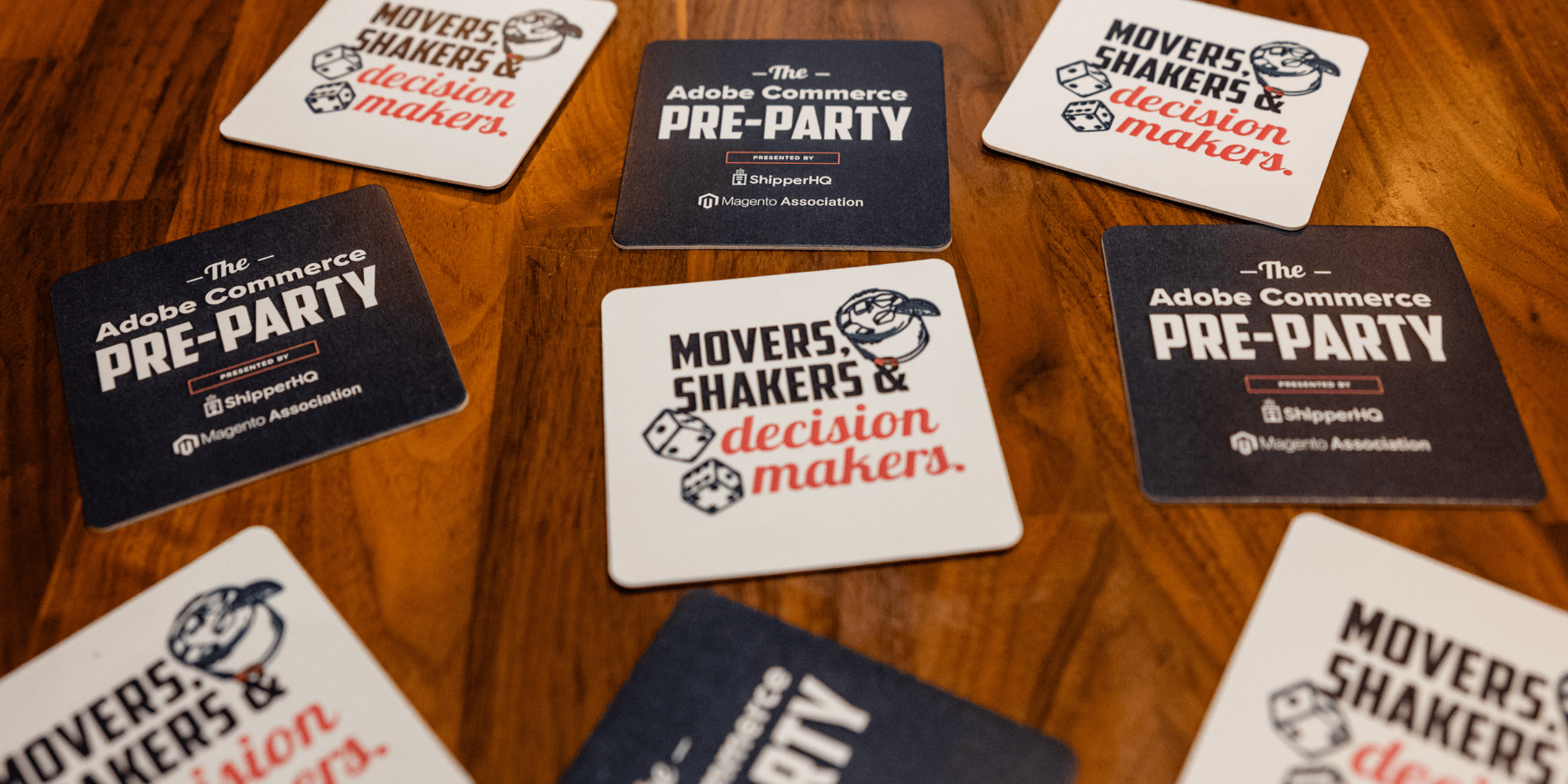As a B2B Shopify merchant, your shipping and checkout experience can (and should be) as seamless as your B2C counterparts. Here’s how to do this.
Determining the best shipping strategy as a B2B Shopify merchant comes with a whole host of requirements not found in the B2C (and DTC) space.
For example, businesses are more likely to want specific shipping options that cater to their schedule and other requirements. Also, they are more likely to need to know where their packages are at all times. And may be pickier about convenience than a typical B2C customer.
Thankfully, as a B2B Shopify merchant, your options don’t have to be limited. You can create a B2C-like experience so your B2B customers will be satisfied and feel like you’ve taken them into consideration.
So whether you are reevaluating your current shipping strategy, or launching your first eCommerce website, here are a few ways to improve your Shopify store’s checkout experience, and consumer confidence in your business.
8 Things B2B Shopify Merchants Didn’t Know They Can Do at Checkout
1. Make accounts optional
Say you sell glass bottles of all different shapes, sizes and colors on your Shopify store.
A beauty company specializing in organic hair products stumbles upon them and orders a few samples. At this point, there’s a chance they’ll be back to place a massive order after a nod from the execs.
But before an order even takes place, they have to input their information in a form.
If a user is comparing different sites, this process can become tedious. Plus, it can lead to too many promotional emails that quickly become irrelevant.
As a merchant, you have a couple options here:
- You can make having an account optional
- Or force them to fill out a form and sign in every time
If a user hasn’t created an account with you, you risk them forgetting about your store when they need to make their final order. On the other hand, forcing them to sign in could make this busy buyer turn away.
Making accounts optional is key, as it lets them decide how much further interaction the company will have with your store.
2. Require last name only
For a B2B interaction, the person buying your merchandise might not be the business owner. They could literally be anybody in the company.
In that case, if they aren’t the decision maker, getting their full information won’t help you much anyway.
The reality is: every extra step a potential buyer must take to get your item is an opportunity for them to abandon their cart and look elsewhere.
Therefore, removing this step – requiring a name – can streamline your sign-up process further.
While you’re at it, make the “Company Name” field optional as well.
You may want to require it to see who’s buying your items, but does it ultimately matter when they’re completing their orders?
3. Add store policies for B2B customers
Every customer, no matter B2C or B2B, wants to know what they’re getting into when they shop with you, particularly when it comes to shipping and returns.
Nobody wants to be taken by surprise from a simple online interaction.
If you have restrictions on your return policy, like no returns after 30 days for example, let everyone know ahead of time.
Shopify checkout lets you add as many policies as you need, including refunds, privacy, shipping, and many more. They can be as extensive or as simple as you want.
As a B2B Shopify business owner yourself, you know how important the bottom line is.
By outlining your policies, you can answer common customer questions, reduce support tickets and ultimately ease the apprehensions a customer may have about purchasing from you.
4. Offer shipping options primed for business
B2B businesses want to receive merchandise from your store at their own schedule, the same as a typical B2C customer. They also only want relevant options that make sense for what they ordered and the relationship you have with them.
With this in mind, think of some ways you can cater to a B2B buyers specific shipping expectations.
For example, if you ship large orders, you may want to make sure you can offer live LTL freight ratings. That way your business customer can see how much they will pay for freight right in the shopping cart rather than having to wait for a phone call from you.
Popular B2C shipping methods, like ground delivery and same-day delivery, should also be offered alongside options like LTL freight. Think about the type of shipping options you provide offline – like local truck delivery – and make sure you’re also offering this choice to your online customers.
5. Tailor your shipping to specific customers, products and origins
Your customers want a personalized checkout that actually aligns with their needs and any pre-established contracts you have in place offline.
If you’ve written in ink that a certain customer receives shipping for half the price, then you need to make sure you honor these agreements no matter the channel.
The best way to do this automatically is by creating shipping rules or restrictions for specific customers.
You can do this through a shipping rate management platform like ShipperHQ.
With ShipperHQ, you can create a customer group – like customers who have made at least 10 purchases in the last 2 years – and apply specific rules to them like free shipping. You can also customize your shipping rates and delivery options for specific products, like if there is a customs restriction for an item shipping to Canada or if you need to apply a shipping surcharge.
Another idea: offer bulk options with price breaks for items B2B buyers typically purchase in large quantities. This lets your business buyers know that you can handle their volume and value their business.
6. Language options
We’re living in a global economy where you can get buyers from all over the world. If you want to increase international traffic – and purchases – consider what languages you have available at checkout.
Even if you’re sure your primary audience speaks one language, there’s always a chance a significant portion of your audience isn’t.
Shopify allows you to translate your checkout by editing your theme. It’s all about giving your potential customers the simplest way to order from you.
Shopify also allows you to translate the page yourself if the language you want isn’t currently available.
As a B2B merchant, this personalized touch shows your customers that you care about serving them, in particular. This type of customization removes a barrier between you and more potential buyers.
7. Add tracking to orders
Many B2B customers want their items Same Day or Next Day. While some of these orders may be crucial, a business needing an item the Same Day may be the difference between making or missing a sale.
The cosmetics company mentioned above could need those bottles for a last minute sponsorship deal.
Not knowing where your item is after you order is frustrating and could lead to high levels of stress.
Consider adding order tracking to your B2B Shopify checkout so every customer knows where their package is at all times.
This way, when there’s a slight delay, they’re not contacting you about it. They’re simply checking the tracking page and hopefully getting some good news about the arrival time.
8. Keep a running tally of shipping costs and fees
As a customer updates their shopping cart, they want to know much they will be spending.
Nobody wants any sort of surprise at checkout. And many won’t do the math in their head, especially when they’re excitedly clicking around your site adding merchandise to their cart.
One great option Shopify offers is to show them a running total of their current cart.
This includes all estimated shipping fees and associated costs, taking the guesswork out of an order’s subtotal.
The more pleasant the experience the better. And if they can reasonably click around and order items without much worry, there’s a higher chance of them coming back.
ShipperHQ can give you assistance here as well.
Our shipping calculator allows for testing different order combinations. Meaning, you can see ahead of time what your checkout experience will look like before payments are made.
Better yet, you can test this out on the backend before ever setting it live so you can be sure you are offering the best B2B user experience possible.
B2B Shopify retailers: the next step is up to you
In the end, a lot of B2B selling comes down to offering options.
No two businesses are the same, and they all have different budgets, needs, hours, and more. A jewelry wholesaler is not going to have the same business requirements as a farm equipment company.
Just like your B2C customers, B2B customers simply want to know they’re getting the best deal possible. They also want to be reassured they can get the item when they want it, on their schedule, with as few barriers as possible.
As a B2B Shopify merchant, they give you the option to format your checkout page just how your customers want to see it, no matter if they’re sitting in their home or at a desk in a high-rise office building.
And if you need a more customized experience, software like ShipperHQ’s Shopify shipping app can let your customers feel like they’re in control with shipping rules, our shipping calculator, live LTL rates, and much more.
Sign up for a FREE 15-day trial of ShipperHQ today to gain more control over your B2B shipping strategy in Shopify.






